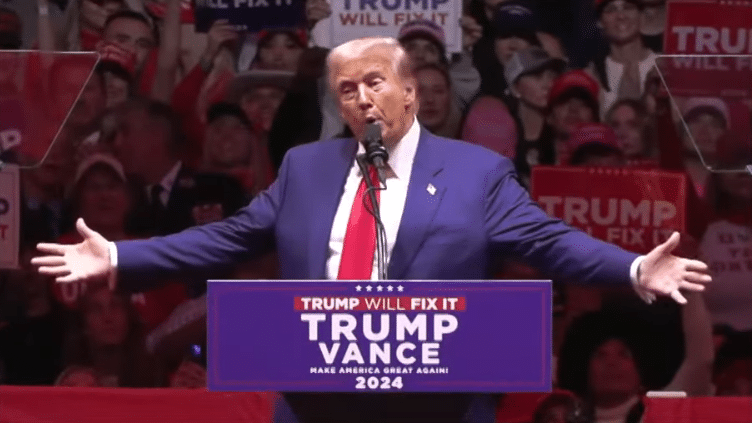
Republicans appear to have flipped the script on the 2020 election, which featured Democrats winning the election narrowly in Georgia, Arizona and Wisconsin by banking early votes that former President Donald Trump was unable to overcome with Election Day turnout, this time outpacing Democrats with early and mail-in votes combined in Georgia, Arizona, Nevada and North Carolina, NBC News reports.
In Georgia, 49 percent of early voting has been by Republicans, 45 percent by Democrats and 6 percent other as of Oct. 28.
In Arizona, 42 percent of early votes are Republicans, 36 percent are Democrats and 22 percent are other.
In Nevada, 40 percent of early votes are Republicans, 35 percent are Democrats and 25 percent are other.
And in North Carolina, 35 percent of early votes are Republicans, 33 percent are Democrats and 32 percent are other.
In other states, Democrats are leading, however.
In Pennsylvania, Republicans appear to be outpacing their 2020 showing, where early votes were 65 percent Democrat and 24 percent Republican according to the U.S. Elections Project, but in 2024 so far, it’s 60 percent Democrat, 30 percent Republican and 10 percent other.
In Michigan, Democrats lead with 52 percent of early votes being Democrats, 38 percent Republican and 10 percent other.
And in Wisconsin, Democrats lead with 35 percent of early votes, 25 percent for Republicans and 42 percent for other.
Michigan and Wisconsin don’t actually provide early voting data based on party registration, so NBC News is extrapolating based on county level data.
If that’s about what it looks like on Election Day, assuming Democrats for the most part vote for Kamala Harris and Republicans for Donald Trump, and unaffiliated voters break roughly evenly, that means Democrats will need to stage come from behind turnout efforts in Georgia, Arizona, Nevada and North Carolina on Election Day.
And Republicans will need Election Day turnout in Pennsylvania, Michigan and Wisconsin to overcome Democrats’ early voting edge there.
And Democrats could be starting to panic, the New York Magazine Intelligencer’s David Freedlander reports in a Oct. 26 piece, “Republicans Say They Are Winning the Early Vote. Should Democrats Panic Yet?”
In what could be a bright spot (or not) for Republicans, in Pennsylvania, Freelander writes, “The returned Republican ballots in Pennsylvania largely come from voters who cast a ballot in 2020…”
Freelander speculates that high propensity voters voting early could be “a sign that the early vote isn’t bringing new voters to the polls so much as cannibalizing the election day vote.”
But is that wishful thinking?
On the other hand, this more or less matches the theory of 2024 Republican election planning, which is to bank high propensity voters before Election Day in order to focus get out the vote efforts on lower propensity voters. And in general, to more or less neutralize Democrats’ early voting edge from 2020 that proved pivotal that year and to expand the Election Day voting coalition. So far, the first half of that is happening.
On the other hand, Democrats might have a similar problem of not having a big enough lead if the GOP does in fact “swamp the vote” — a Trump campaign slogan — on Election Day itself, replicating Trump’s major in-person voting advantage from 2020.
To get a same day determination of who might have won the election — a dim prospect at the moment — the margins of victory on Election Day vote counting for whoever’s ahead would need to be greater than the number of outstanding ballots remaining to be counted, leaving media outlets with little choice but to call the election.
In 2020, Trump led in the early counting on the night of the election in the battleground states from Election Day turnout, which favored Republicans, but those leads evaporated when the mail-in ballots, which favored Democrats, were ultimately counted.
From that perspective, the numbers don’t seem terrible for Trump and Republicans — they are definitely an improvement from 2020 — meaning Trump’s strategy could be paying off.
If the election will be “too big to rig” as Trump has predicted, then a winner might be declared on the night of the election. Is it? We’ll find out soon enough. Stay tuned.
Robert Romano is the Vice President of Public Policy at Americans for Limited Government Foundation.






